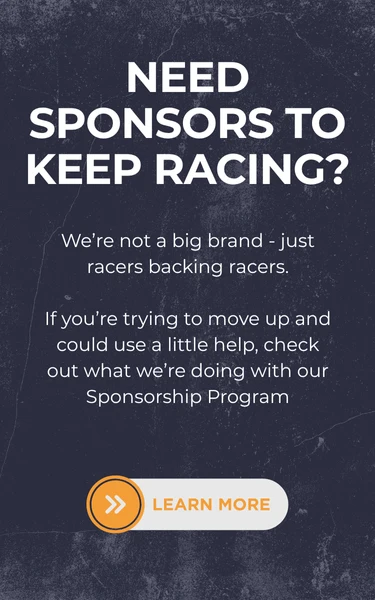You’ve got a Facebook page. Maybe some followers on Instagram. You post your results, tag your sponsors, and drop a few photos from race day. That’s more than a lot of drivers do.
But if you’re serious about racing—really serious—a social media feed isn’t enough anymore.
You need a website.
Social is fine for quick updates. But it’s not built to help you grow your career. Sponsors, teams, and media people aren’t going to scroll through months of posts to figure out who you are. They want one place to see everything: who you are, what you’ve done, and how to contact you.
That’s what a website gives you. It’s your home base online. A spot you control. No algorithms, no clutter, no distractions.
I’ve been around racing since I was a kid. I’ve built websites for drivers, teams, and racing businesses through P1 Web Development. And here’s the truth: having your own site makes you look professional. Not having one makes you look like you’re not ready.
This article breaks down why every race driver should have a website—what it does, what it should include, and why it matters more than most racers think.
Social Media is Rented Land. Your Website is Yours.
Most drivers rely on social media. It’s quick, free, and familiar. But here’s the truth: those platforms aren’t built for you. They’re built for them.
You don’t own your content there. You don’t control who sees your posts. The platform decides what gets shown and what gets buried—based on algorithms you’ll never see. You could post a sponsor update and get zero reach. Not because it’s bad, but because the algorithm didn’t care.
Even worse? You could get locked out of your account, banned, or just pushed to the bottom of people’s feeds with no warning.
Your website doesn’t work like that.
You own it. You control every word, every photo, every layout choice. No distractions. No competitors’ ads. No sudden changes to your look or message.
If someone searches your name, your website should be the first thing they find—not a random article, a Facebook page you haven’t updated, or worse… nothing.
“When you build on someone else’s platform, you’re always one rule change away from disappearing.”
Social media is borrowed space. Your website is home.
Sponsors Take You More Seriously
If you want sponsor money, you have to look like someone worth backing. That means looking prepared, on and off the track.
When a company is thinking about giving you money, gear, or support, the first thing they’ll do is look you up. If all they find is an Instagram page full of selfies, memes, or buried race updates, that doesn’t help your case.
But if they find a clean, focused website that tells your story, shows your results, highlights your partners, and gives them a way to contact you, now they’re paying attention.
A good driver website is like a digital pitch deck. It quietly says: “I’m organized. I’m professional. I understand what sponsors care about.”
Here’s what sponsors expect to see when they visit your site:
- Who you are (short, clear driver bio)
- What you’ve done (stats, results, or racing history)
- Where you’re racing (your schedule or series)
- Who you’re working with (logos and links to current partners)
- What kind of exposure or value you offer
- A quick, easy way to get in touch
A great example of this is the Adam Brickley Racing website. It’s simple and clean, and everything is easy to find. His driver story lays out where he came from and what he’s done. His accomplishments are right up front. And his sponsors have a clear, dedicated space—with logos, links, and visibility built in.
He’s not guessing what people want to see. He’s making it easy for them to find it.
What Should Be On Your Website (And Why)
Your website doesn’t need to be flashy. But it does need to be complete.
Sponsors, fans, and race officials come to your site for answers. They want to know who you are, what you’ve done, where you’re racing next, and how to get in touch. If they can’t find that fast, they move on.
Here’s what every serious race driver website should include:
- About Page – Your story. Where you started, what you’ve achieved, and what series you’re in now. It doesn’t have to be long—just real. This is where people connect with you, not just your results.
- Schedule – An easy-to-read list of upcoming races. Sponsors want to know where you’ll be. Fans want to follow along. It shows you’re active and organized.
- Results or Highlights – This doesn’t have to be a full stat sheet. Just give a clear view of your progress. Series standings, podiums, notable finishes—keep it updated and honest.
- Photo & Video Gallery – Action shots. Pit lane. Victory lane. Behind-the-scenes. Make sure they’re good quality and organized. This gives sponsors visual content they can be proud to be part of.
- Sponsors Page – Show who supports you. Use logos. Link to their sites. Say thank you. This isn’t just a shoutout—it proves you’re already trusted by others, and it makes future partners more comfortable getting involved.
- Contact Page – A simple form or direct email address. If someone wants to offer support, book an interview, or discuss a deal, don’t make them chase you down.
Optional—but powerful:
- News or Blog – Share race recaps or updates. It keeps your site fresh and gives fans more to follow.
- Media Kit Download – For more advanced drivers, a one-click PDF with your bio, photos, and stats can be a game-changer for media or sponsor pitches.
- Email Signup – Even if you don’t use it yet, start collecting emails. It’s a smart move for the long haul.
Why It Pays Off Over Time
Social platforms come and go. Features change. Reach drops. Your website doesn’t.
It’s not just about looking good today—it’s about building something that grows with you.
As your career moves forward, your site becomes an archive. Your race results, photos, videos, updates—it all lives there. Sponsors and fans can see your journey, season by season. And if you move to a new series or class? Your site moves with you.
You also control your search presence. When someone Googles your name, your website should be what they find – not a third-party race result site, or a link to an inactive Facebook page. With a well-structured site, you show up first, and you decide what they see.
Over time, your site becomes the place people trust to get accurate information about you. That’s not just helpful—it’s powerful.
And there’s more:
- Want to start selling merch? Add it to your site.
- Want to offer sponsor shoutouts or behind-the-scenes content? Add it to your site.
- Want to build an email list or send race updates? You guessed it—use your site.
Your website is a long-term asset. Social media feeds fade in 24 hours. A good site lasts.
Getting Started Isn’t That Hard
A lot of drivers put this off because they think building a website is too technical, too expensive, or just one more thing to manage.
That’s fair. But the important thing is this: getting something in place is always better than doing nothing.
There are platforms out there that let you build a basic site yourself. And if that’s where you’re at—start there. It might not handle things like race schedules or sponsor layouts perfectly, but it gets you moving. You can always improve it later.
If you reach a point where you want something more dialed-in—something that handles schedules, media, and sponsor sections without a fight—that’s where working with someone who knows motorsports can help. That’s what I do here at P1 Web Development. I build sites specifically for race drivers, so the stuff you care about is already baked in.
“Even if your ambitions are huge, start slow, start small, build gradually, build smart. But just get started”
— Gary Vaynerchuk
Whether you work with someone like me or figure it out on your own, the most important thing is that you get started.
Final Thoughts
If you’re serious about racing, you need more than just a social feed.
Your website gives people one place to find out who you are, what you’ve done, who supports you, and how to get in touch. No distractions. No guessing. No chasing down scattered info across platforms.
This isn’t about ego. It’s about being prepared when opportunity shows up.
Sponsors, media, fans—they all go online first. Social media can show your personality. Your website shows you’re serious.
And whether you build it yourself or get help, what matters most is that you build something. Even a simple, well-organized site can put you ahead of 90% of the drivers you’re competing with—on and off the track.

Kelly Pfleiger
I'm the owner of P1 Web Development — a design studio built for racers, teams, and motorsports businesses that are sick of outdated websites and generic templates. I build fast, aggressive, mobile-first WordPress sites with a sharp focus on usability, sponsor value, and search visibility. If you’re in the racing industry and need a site that actually works for your program, this is what I do.





